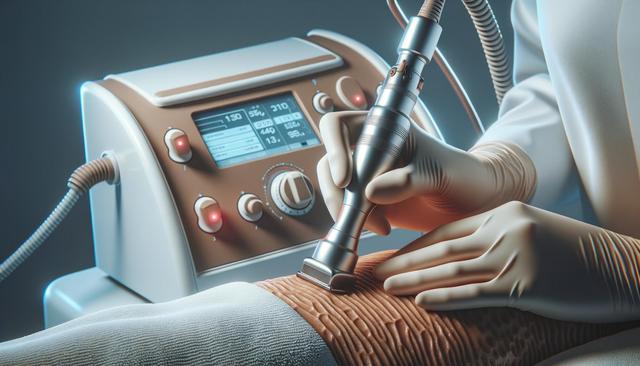Understanding Advanced Skin Resurfacing
Advanced skin resurfacing refers to a range of cosmetic procedures designed to improve the texture, tone, and overall appearance of the skin. Among the most effective techniques is laser skin resurfacing, which utilizes focused beams of light to remove damaged skin layers. The process encourages the body to produce new skin cells and boosts collagen synthesis, a protein essential for maintaining firm and youthful skin. Unlike traditional exfoliation methods, laser treatments penetrate deeper layers for more significant results. This makes it a popular choice for individuals seeking long-term improvement in skin smoothness and clarity.
Laser skin resurfacing is often used to address common skin concerns, such as:
- Fine lines and wrinkles
- Acne and surgical scars
- Sun damage and age spots
- Uneven skin tone and texture
- Enlarged pores
This treatment can be tailored to different skin types and conditions, offering a personalized approach to skin rejuvenation.
The Role of Collagen in Skin Rejuvenation
Collagen plays a crucial role in maintaining the structural integrity and elasticity of the skin. As we age, collagen production naturally decreases, leading to the formation of wrinkles and loss of firmness. Laser skin resurfacing addresses this by stimulating the skin’s natural healing process, prompting fibroblasts to generate new collagen fibers. This results in a firmer and more resilient skin texture over time.
Enhanced collagen production benefits the skin in various ways:
- Improves elasticity and firmness
- Reduces the appearance of fine lines
- Strengthens the skin barrier
- Promotes a smoother and more youthful complexion
Regular sessions, as recommended by a dermatologist or licensed practitioner, can help maintain these improvements and support long-term skin health.
Types of Laser Skin Resurfacing Technologies
There are several technologies used in laser skin resurfacing, each suited for different skin concerns and goals. The two main categories are ablative and non-ablative lasers. Ablative lasers remove thin layers of skin and are typically used for deeper wrinkles and significant scarring. Non-ablative lasers, on the other hand, target the underlying skin tissue without removing the top layer, making them ideal for mild to moderate skin issues with shorter recovery times.
Common types of laser technologies include:
- Fractional lasers – Treat only a fraction of the skin at a time, promoting faster healing
- CO2 lasers – Often used for more intensive resurfacing of deep wrinkles and scars
- Erbium lasers – Offer precision for surface-level concerns with minimal thermal damage
The choice of laser depends on the individual’s skin type, the severity of the skin condition, and the desired outcome. A professional consultation is essential to determine the most suitable approach.
What to Expect During and After Treatment
Understanding the procedure and recovery process can help patients make informed decisions. A typical laser skin resurfacing session begins with a thorough skin evaluation to ensure the treatment is appropriate. The treated area is then cleansed, and a topical anesthetic may be applied to minimize discomfort. Depending on the type and depth of the laser used, the session can last anywhere from 30 minutes to over an hour.
Post-treatment care is a critical component of the process. Patients may experience redness, swelling, and a sensation similar to a sunburn for a few days. Proper aftercare includes:
- Keeping the skin clean and moisturized
- Avoiding direct sun exposure
- Using recommended skincare products to support healing
- Following all instructions provided by the practitioner
Recovery time varies based on the intensity of the treatment, with some individuals returning to normal activities within a week, while others may need more time for healing.
Is Laser Skin Resurfacing Right for You?
Laser skin resurfacing offers a powerful option for individuals looking to improve their skin’s appearance through non-surgical means. However, it may not be suitable for everyone. Factors such as skin tone, medical history, and current skin conditions need to be evaluated before proceeding. People with active acne, certain medications, or specific skin sensitivities should consult with a qualified professional to assess their eligibility.
Those who may benefit most from the procedure include individuals with:
- Visible signs of aging such as wrinkles or sagging skin
- Scarring from acne or previous surgeries
- Sun-damaged skin with pigmentation issues
- Desire for smoother, more even skin texture
Ultimately, the decision to undergo laser skin resurfacing should be based on realistic expectations, professional guidance, and a commitment to post-treatment care.
Conclusion: Achieve Healthier, Revitalized Skin
Advanced skin resurfacing, particularly through laser technology, has become a well-regarded method for enhancing skin appearance and boosting confidence. Whether you’re addressing signs of aging, improving skin texture, or reducing scars, laser skin resurfacing offers a targeted and effective solution. With its ability to stimulate collagen and support long-term skin health, this treatment continues to gain popularity among individuals seeking noticeable yet natural-looking results. Consulting with a qualified specialist can help you determine the right approach for your skin goals and ensure a safe, tailored experience.



Leave a Reply